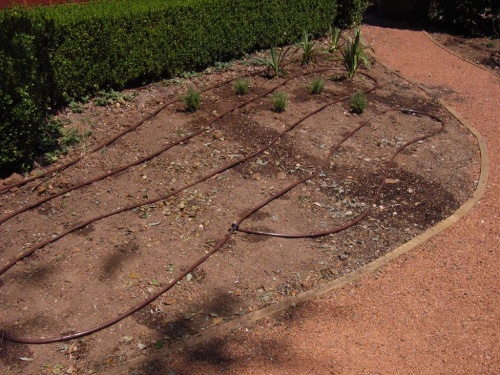
A NEW Year starts, but the garden’s new year began in spring when life emerged from the cold with a hundred shades of green adorning deciduous trees and shrubs and the bulbs moving through the soil.

The weather predictions are that this will be the hottest and driest summer on record. Let’s hope the weather experts have got it wrong.
However, plants are much tougher than what we might think. For instance, during a big drought Goulburn residents were banned from any outdoor watering, including in watering cans, for five years. And yet their roses never looked so good and even camellias survived.
Drip irrigation is the only effective way to water garden beds, not sprinklers.
For every three litres of water applied by sprinkler or hand-held hose on a hot summer’s day over 30C in Canberra, two litres will evaporate and never reach the roots of plants!
Many people are not getting the message and end up with massive water bills. The weather bureau’s average rainfall for Canberra is 619mm; the average evaporation rate is 1800mm!
A reminder: using any type of sprinkler system between 9am and 6pm is completely banned by our water authority, Icon Water. Fines apply. However, drip systems are permitted at any time.
Drip lines should be placed on top of the soil and under the mulch, thus preventing any evaporation.
Another important reminder: if you are on holidays and have an automatic watering system arrange for a friend or relative to regularly check the system.
For the well-established garden it may be worthwhile paying a person to look after your garden while you’re away rather than losing valuable plants.

Automatic systems can fail and I have known of gardens flooded for weeks when the system did not turn off! What a water bill!
Potted plants will need to be watered every couple of days. If feasible, move the pots to the shadiest part of the garden.
The most important aspect of gardening during summer is watering and this is dealt with in the opening chapters of “The Canberra Gardener”, the local gardening bible published by the Horticultural Society of Canberra. Written by its members, it is a mini-encyclopedia covering every aspect from ground preparation to watering, feeding and planting. It is available from all bookshops and most newsagents.
Jottings…
- Continue to deadhead roses and perennials. Don’t put rose prunings on the compost heap.
- Feed tomatoes and strawberries with Maxicrop Seaweed Plant Nutrient with a weak solution every two weeks.
- If we do have spells of rain combined with hot weather, mildew can be a problem, particularly on strawberries, roses and geraniums. Spray with certified organic eco-fungicide.
- When feeding container plants always water first and then apply a liquid plant food (as above) regularly.
Who can be trusted?
In a world of spin and confusion, there’s never been a more important time to support independent journalism in Canberra.
If you trust our work online and want to enforce the power of independent voices, I invite you to make a small contribution.
Every dollar of support is invested back into our journalism to help keep citynews.com.au strong and free.
Thank you,
Ian Meikle, editor




Leave a Reply